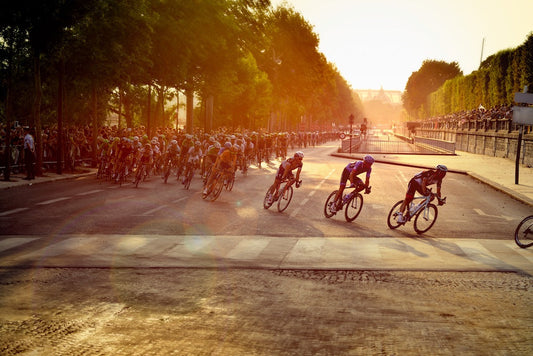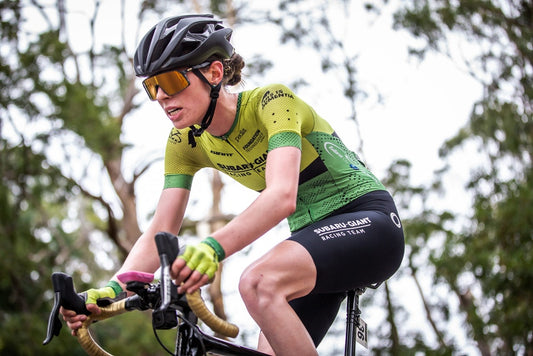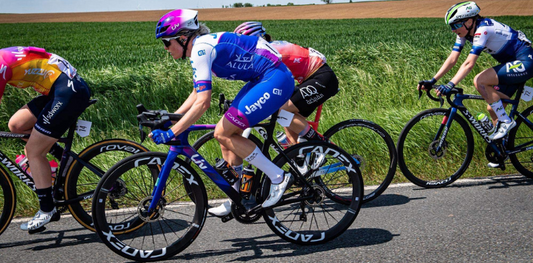Learnings from COVID-19 Lockdown for Cyclists: Interview with Australian Cycling Coach - Kevin Poulton
Australian Cycling Coach Kevin Poulton shares his expert insights into the lessons learnt from COVID-19 lockdowns, building mental resilience, and mastering optimal hydration for Pro Cyclists.
Reviewed by our Expert Panel
27 October 2023
About Kevin Poulton:
Meet Kevin Poulton, the cycling mastermind shaping champions like Caleb Ewan and Mathew Hayman. Across his career, Kevin's guided cyclists to many Grand Tour stage wins and UCI Pro Tour victories. In our recent interview, Kevin discussed the challenges faced during COVID-19, race cancellations, and training Pro Cyclists under isolated conditions, with PREPD their vital lifeline!

Navigating the Digital World: A Starting Point
Q1: What was the greatest learning from the COVID-19 Lockdown for Cyclists?
The pandemic-induced lockdowns have underscored the invaluable role of indoor training in maintaining and even enhancing performance. Athletes learned the importance of adaptability, finding that structured indoor training can effectively simulate outdoor conditions.
This has allowed for consistent training schedules, which are essential for peak performance, irrespective of external constraints like weather or social restrictions. One of the most groundbreaking learnings during the COVID-19 lockdown was related to Training Stress Score (TSS) and Chronic Training Load (CTL) metrics. We observed that these metrics were often not reflective of the true workload and fitness levels when training was conducted indoors.
Despite reduced volume, cyclists were achieving high levels of fitness, suggesting that the traditional metrics may not fully capture the physiological stress and adaptations occurring with indoor training. This calls for a more nuanced approach to interpreting data and perhaps the development of indoor-specific metrics for a more accurate performance assessment.

Adapting to Isolation During COVID-19
Q2: How did you set athletes a long-term goal for an event to train towards, or was it more about improving/maintaining aspects of physical performance designed around training?
With no definite date to return to racing, it was about maintaining the fitness they have built. The racing calendar was much different to what we were planning once training resumed. However, at the time we needed to ensure the riders would be race ready at the click of their fingers, and they were. Our goal was to keep some fitness up, and then once we had a definite race date, we ramped up training accordingly.
Q3: Can you discuss the development of online riding during this time and the benefits it has had for Cyclists?
The advent of online riding platforms has been a game-changer, and MyWhoosh has elevated this to a new level by hosting the highest level of eSports racing. With significant prize money and the official backing of the UCI (Union Cycliste Internationale), MyWhoosh has become an attractive platform for elite-level competition.
The platform's role in hosting the Cycling eSports Championships for the next three years adds another layer of credibility and appeal. This illustrates how online riding isn't merely an alternative but is becoming a legitimate pathway for high-stakes, professional competition, thus serving as a potent tool for cyclists to hone their skills and achieve greater strength on the bike.
Cyclists can now engage in high-quality training sessions with real-time data tracking and analytics. Moreover, the social aspect of virtual rides and races has introduced an element of competition, which can be a strong motivational factor. The possibility to race against other athletes globally allows for unique training stimuli, thereby helping athletes get stronger on the bike.

Benefits & Challenges of Lockdown for Cyclists
Q4: Athletes had an extended time away from racing and competing. How was this used to best advantage them for future performances?
With this time away from racing, it gave some athletes the opportunity to restart their season. Specifically, some riders suffered from early season injuries or illness and were a little behind where they should have been. For them, it took the pressure off and allowed them to get their bodies right. This has continued and we now see teams supporting riders post COVID, specifically regarding support around mental health.
Q5: What is your indoor training platform of choice?
I use MyWhoosh for its comprehensive suite of features, but its newly established position in hosting the highest level of eSports racing adds another dimension. MyWhoosh's collaboration with the UCI in hosting the Cyclist eSports Championships for the next three years aligns with my own aim to further develop indoor training and elevate online virtual racing to a professional level. The platform's focus on high-level competition, backed by significant prize money, ensures that we're training athletes using the most cutting-edge and reputable platforms available.

Q6: What is the ideal split between Indoor and Outdoor training?
The split between indoor and outdoor training is highly individualised, based on the athlete's goals, target events, and geographical constraints. Generally, for professional cyclists, I recommend a ratio that might range from 30:70 to 50:50. Indoor sessions are particularly beneficial for targeted work like high-intensity intervals or time trials, while outdoor rides are crucial for skills like bike handling and real-world racing dynamics.
Q7: With the increase of Indoor Training, what are the key learnings you have observed?
Indoor training has been revolutionary in providing real-time, granular data to athletes, among which hydration has emerged as a critical parameter. Unlike outdoor conditions, where variables such as wind and ambient temperature can mitigate the perception of sweat loss, indoor conditions make fluid loss glaringly obvious. This heightened awareness serves as a constant reminder of the importance of hydration, not only during indoor training but also when transitioning to outdoor performance. Closely tracking fluid loss data can provide crucial insights into an athlete's physiological condition during a workout. This allows for more precise adjustments of fluid intake during the session, enhancing both performance and recovery.
Fluid loss leads to reduced blood volume, and subsequently, a decreased cardiac output. This translates to a decline in power output, agility and concentration.
At 1% body weight loss, expect a 5% reduction in power output.
At 2% loss, the power output can drop by up to 15%.
A 3% loss can lead to a severe decline of 40% or more in power output.
Given the high-intensity nature of indoor training, particularly with platforms like MyWhoosh offering competitive eSports racing, the margin for error is incredibly narrow. Dehydration is a controllable variable, and its neglect can lead to significant compromises in performance, which is unacceptable at the elite level.
Thus, hydration isn't merely a supporting element but a central tenet of the indoor training paradigm. Ensuring optimal hydration levels through constant monitoring and well-planned preventive measures is essential for maximising the benefits of indoor training and competitive performance.

Strengthening Mental Resilience: Kevin's Expert Advice
Q8: Athletes’ mental strength and resilience is important. Do you have any guidance or advice you recommend to your athletes?
I’m aware and conscious of the mental burden on athletes during this period. For this reason from time to time, I have removed much of the “structure of training”, and provided the athletes with weekly goals of volume to achieve. With this method, it has allowed them to join their friends in online virtual rides and reach a decent level of volume without becoming too overwhelmed.

PREPD: Revolutionising Hydration for Cyclists
Q9: With the physical stress of training, how important is staying healthy, eating and hydrating well, and having good gut health and immunity? How does PREPD fit in here?
With the increase of indoor training volume, the riders are becoming more susceptible to dehydration. It is very easy to lose 2-3 kg in a 1-hour indoor workout. With this in mind, I have the riders weigh themselves before and after a workout once a week. That way they can gauge how much sweat they are losing from a particular ride.
If the riders have a planned long indoor session, I recommend they use PREPD BEFORE and AFTER that key session. Some of these longer indoor workouts are up to 3-hours in duration. PREPD provides a definite advantage to their performance by enhancing their normal hydration strategy.
Ready to enhance your cycling journey?
Try PREPD's two-step PRIME and RECOVER formula today and discover the power of our expert-backed hydration strategies. Let the inspiration flow as you conquer your training. For more cycling blogs and tips, visit: https://prepdhydration.com.au/blogs/cycling



